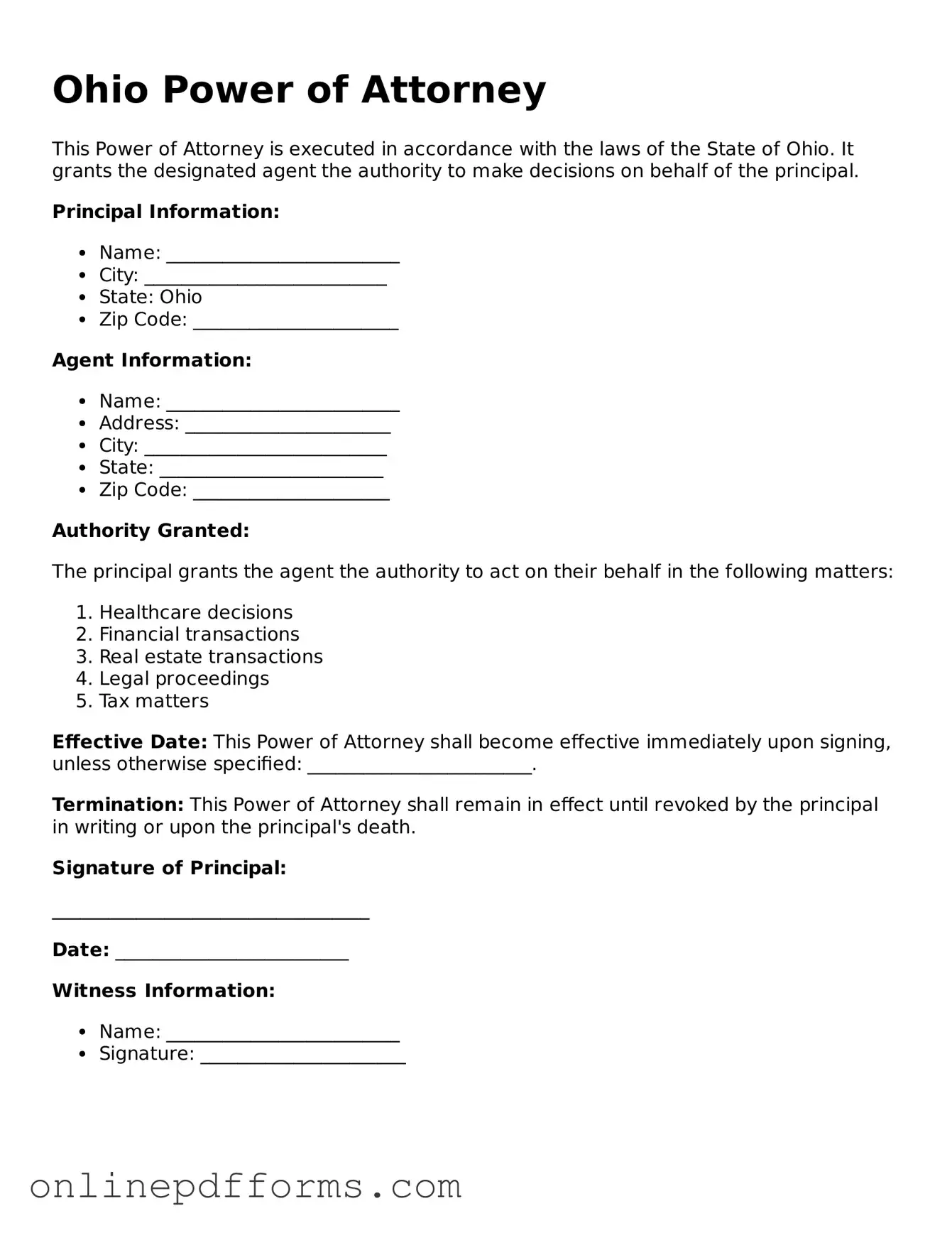The Ohio Power of Attorney form shares similarities with a Living Will. Both documents serve to express an individual's wishes regarding their health care and personal affairs. While a Living Will specifically addresses medical treatment preferences in the event of incapacitation, the Power of Attorney grants someone the authority to make decisions on behalf of the individual. This means that, in situations where a person cannot communicate their wishes, the designated agent in a Power of Attorney can make health care decisions that align with the individual's values, as outlined in their Living Will.
Another document comparable to the Ohio Power of Attorney is the Healthcare Proxy. This document specifically designates an individual to make medical decisions when a person is unable to do so. Like the Power of Attorney, a Healthcare Proxy provides clarity and direction in critical situations. However, the Power of Attorney can extend beyond health care decisions, allowing the appointed agent to manage financial and legal matters as well, making it a more comprehensive option for individuals looking to plan their affairs.
The Ohio Power of Attorney also resembles a Guardianship document. Both establish a system for decision-making when an individual is unable to care for themselves. In a Guardianship, a court appoints a guardian to manage the affairs of the incapacitated person, while a Power of Attorney allows individuals to choose their agent without court intervention. This choice can provide a more personal and flexible approach to managing one’s affairs, as it reflects the individual’s preferences and trust in their appointed agent.
For those considering lending agreements, reviewing a financial obligation document like a promissory note is critical. This form serves as a binding agreement between a borrower and a lender, ensuring clarity regarding repayment terms. For more information, you can refer to an insightful resource on the topic: "detailed information about Promissory Note requirements" Promissory Note.
A Trust Agreement is another document that shares characteristics with the Ohio Power of Attorney. Both serve as tools for managing an individual's assets and affairs. A Trust allows for the distribution of assets upon death or incapacity, while a Power of Attorney enables someone to handle financial matters during the individual's lifetime. The key difference lies in the structure; a Trust is often irrevocable and involves a trustee, whereas a Power of Attorney is a more straightforward delegation of authority that can be revoked at any time by the principal.
The Living Trust is similar to the Ohio Power of Attorney in that both documents facilitate the management of an individual’s financial and health care decisions. A Living Trust allows individuals to place their assets into a trust for management during their lifetime and distribution after death. Meanwhile, the Power of Attorney empowers an agent to make decisions on behalf of the individual, whether related to financial matters or health care, ensuring that the individual's wishes are honored even when they cannot express them directly.
A DNR (Do Not Resuscitate) order is another document that aligns with the Ohio Power of Attorney, particularly regarding health care decisions. A DNR instructs medical personnel not to perform CPR in the event of cardiac arrest, reflecting the individual’s wishes about end-of-life care. While a Power of Attorney can encompass broader health care decisions, including whether to initiate or withdraw life-sustaining treatment, a DNR is specific to resuscitation efforts, making it a focused complement to the more comprehensive Power of Attorney.
Finally, a Bill of Rights for Patients is also comparable to the Ohio Power of Attorney. This document outlines the rights of patients in health care settings, ensuring that they receive respectful and appropriate care. While not a decision-making tool like the Power of Attorney, it emphasizes the importance of patient autonomy and informed consent. Both documents advocate for the individual's preferences and rights, reinforcing the principle that individuals should have a say in their health care and personal affairs.
